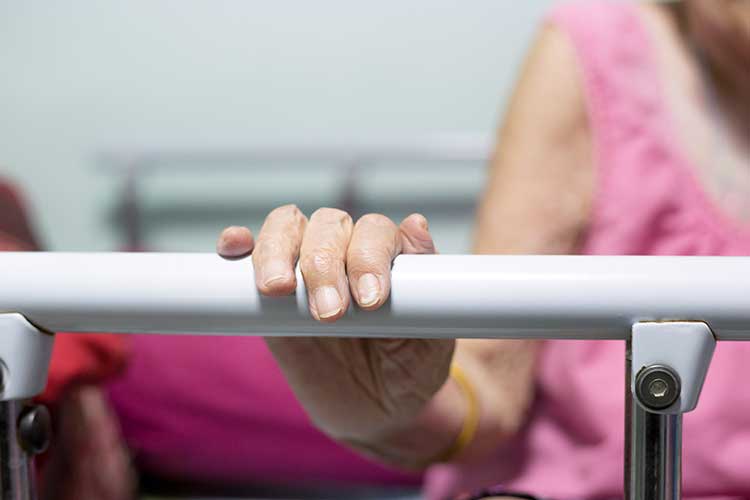Minimising Restrictive Practices in Aged Care: Rules and Regulations
Published: 06 May 2024

Published: 06 May 2024

This article is intended to be read alongside Alternative Strategies to Restrictive Practices in Aged Care.
Restrictive practices are ethical, legal, and clinical violations of fundamental human rights that may lead to poor care outcomes (VIC DoH 2022).
As much as possible, aged care services should aim to create and maintain a restrictive practice-free environment. This is the recommended standard of care and will prevent older people from suffering unnecessary harm and trauma (VIC DoH 2016).

The Aged Care Act 1997 defines a restrictive practice as ‘any practice or intervention that has the effect of restricting the rights or freedom of movement of the care recipient’.
There are five types of restrictive practices:
Seclusion involves confining a care recipient in a room or physical space by themself (at any hour of the day or night) and preventing them from leaving voluntarily, or implying that they cannot leave voluntarily. Examples include:
(ACQSC 2021)
Chemical restraint is the use of medications or chemical substances to influence a person’s behaviour. This does not include medications that have been prescribed by a medical practitioner to treat a mental or physical condition (ACQSC 2021).
Mechanical restraint is the use of devices such as lap belts, bed rails, and restrictive clothing to restrict a person’s movement for the purpose of influencing their behaviour. This does not include devices used for therapeutic or non-behavioural purposes, e.g. a wheelchair (ACQSC 2021).
Physical restraint is the use of physical force to prevent, restrict or subdue the movement of a person’s body for the purpose of influencing their behaviour. Examples include:
(ACQSC 2021)
Environmental restraint involves restricting a person’s free access to environments, items or activities. Examples include:
(ACQSC 2021)
For more clarification on what is and isn’t considered a restrictive practice, view the following resource from the Aged Care Quality and Safety Commission:
Restrictive practices may exacerbate a client’s trauma or inflict physical or emotional harm, posing a profound risk to their safety and wellbeing and even increasing their risk of death. Furthermore, these interventions are not known to alter behaviour long-term (Emanuel et al. 2017; VIC DoH 2022).
Remember that restrictive practices are not therapeutic interventions and should never be treated as such (Melbourne Social Equity Institute 2014).
Just some of the many potential adverse effects of restrictive practices include:
(RCACQS 2019)

Restrictive practices must only be used as a last resort to protect a care recipient, yourself, or others from harm. They must be used in the least restrictive form possible, and only after considering the likely impact on the person (ACQSC 2021).
There are strict requirements that must be met in order for a restrictive practice to be used lawfully in a residential aged care setting:
(DoHaAC 2024; ACQSC 2021, 2023)
Restrictive practices should never be used:
(VIC DoH 2016; Melbourne Social Equity Institute 2014; QLD DoH 2016)
In rare and unexpected emergency situations, providers are permitted to use a restrictive practice.
An emergency scenario is defined as a serious or dangerous situation that is unanticipated or unforeseen and requires immediate action (ACQSC 2021).
In these emergencies, restrictive practices may be used with exemption from certain requirements such as consent. However, the emergency use of restrictive practices may still only be employed under the following conditions:
(ACQSC 2021, 2023)
Standard 3: Care and Services - Outcome 3.2: Delivery of care and services (Action 3.2.7) under the strengthened Aged Care Quality Standards requires that the use of restrictive practices is minimised as much as possible and that when restrictive practices are used, they are:
(ACQSC 2024)
Restrictive practices are interventions that should only be used as a last resort.
Remember that these practices are highly distressing for clients and may cause or exacerbate trauma. Your goal should be to minimise and hopefully prevent restrictive practices as much as possible.
Always refer to your state or territory’s legislation, as well as your organisation’s policies and procedures.
Question 1 of 4
George has Alzheimer's disease and often forgets where his room is located. To assist him, the staff at his aged care facility have placed clear signs on the walls to guide him back to his room safely. Are these signs considered a restrictive practice?